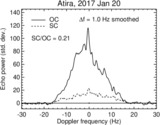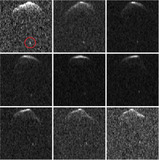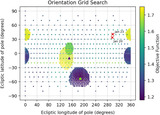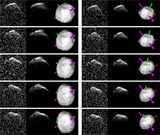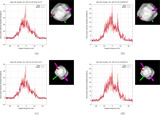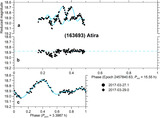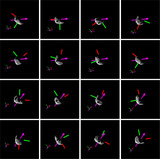Image Details
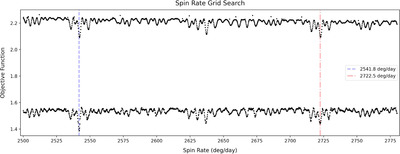
Caption: Figure 5.
To test previously published rotation periods, we performed a period search covering 2500–2780 deg day−1 (3.107–3.456 hr) in 1 deg day−1 increments using only 2017 radar and lightcurve data. The vertical axis represents the weighted sum of χ 2 values, and the horizontal axis represents spin rate. Spin rate is found as 8640/P rot [hr]. At this stage, we used the best orientations found so far: the collection of models at the top have a northern hemisphere orientation (ecl. lon. 300°, ecl. lat. 33°), and the collection at the bottom has a southern hemisphere orientation (ecl. lon. 170°, ecl. lat. −40°); objective function values have not been altered. Note two prominent minima at 2541.8 deg day−1 (3.399 hr) and 2722.5 deg day−1 (3.174 hr) shown by blue and red vertical lines, respectively. For reference, the spin rate found by P. Pravec (2003) is 2547.9 deg day−1 (3.391 hr), and the spin rate found by E. Rondón et al. (2022) is 2740.2 deg day−1 (3.153 hr).
Copyright and Terms & Conditions
© 2024. The Author(s). Published by the American Astronomical Society.


